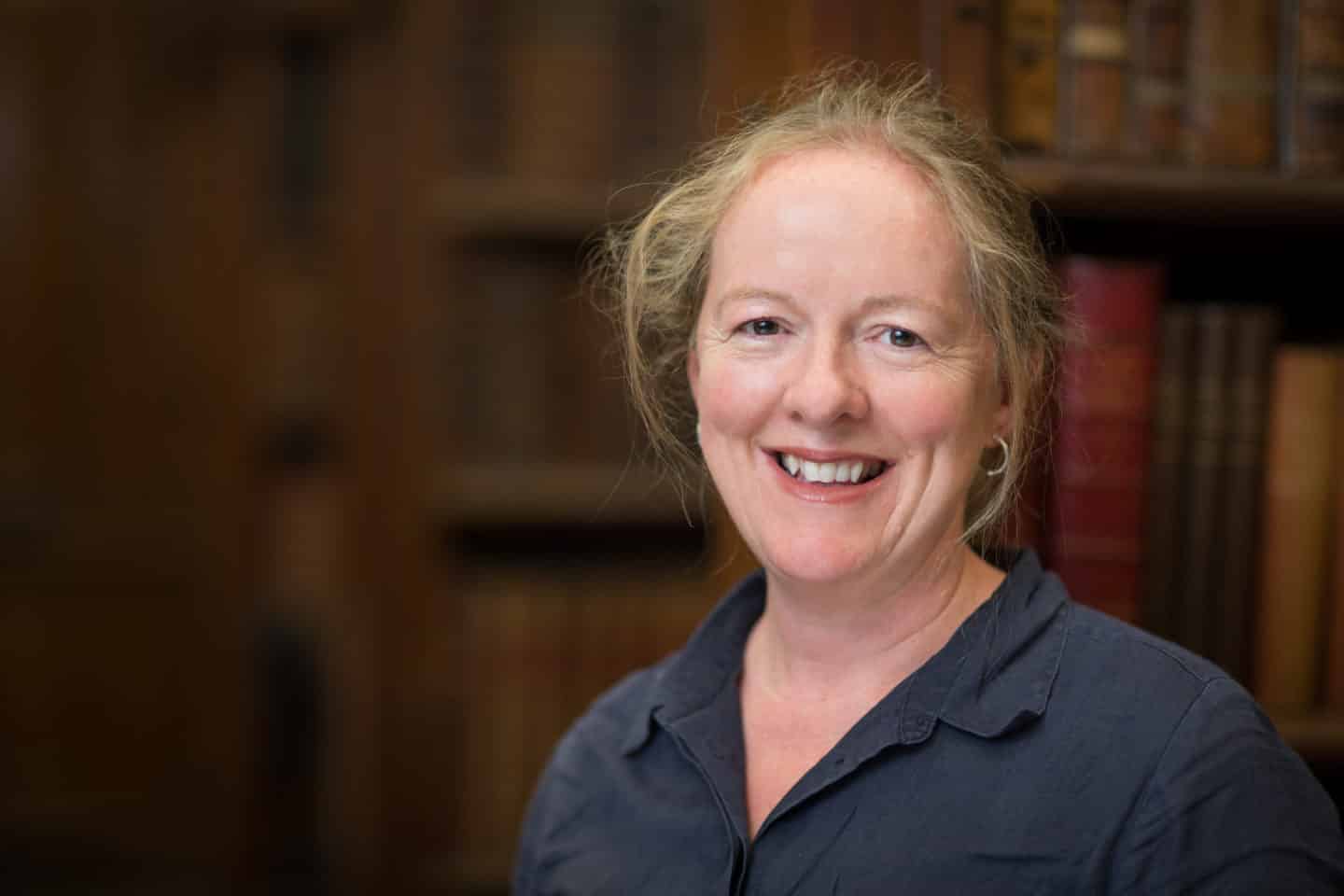Blog Post
Spring comes to the Senior Library

It is perhaps not surprising that the shelves of the Senior Library are full of books bound not just in England but in Oxford: from the earliest days of the College, both individual Fellows and the College’s librarians would have taken the books they bought as loose printed sheets or in cheap temporary bindings to one of the many binders working in the city. While the style of these Oxford bindings changed over time, for the most part they are characterised by the use of a dark tanned leather very much at one with the oak presses in the Senior Library and a style of decoration that rarely stands out on the shelf.
So it was immediately clear to me that the seven volumes pictured here, in red leather with gilt tooling, were not bound in Oxford! My first thought was that the binding looked Dutch and the title page of the first volume suggested this might be true. The seven-volume Institutiones historiae ecclesiae Veteris Testamenti, a magisterial Church history by the Dutch theologian Hans Venema (1697-1787), was published in Leiden and Leuwarden between 1777 and 1783. Venema was Professor of Theology at the University of Franeker for over fifty years and head of the University, its rector magnificus, four times. After retiring, he continued to lecture on church history in Leeuwarden, his hometown, until his death.
While the work itself is not particularly accessible to a 21st century reader, the binding could hardly be more appealing. The volumes are bound in bright red goatskin (morocco) and elaborately tooled in gilt. The covers are decorated with an elaborate floral centrepiece made up of small ornaments set within an elegant gilt-tooled frame. The spines (now slightly discoloured) are even more elaborate, with the title stamped in gilt on a black leather spine label and sprays of flowers and leaves filling the spine compartments. More flowers await anyone who opens the book: decorated endpapers printed, charmingly, with red and yellow flowers. Made with what is known as calico paper (from the German Kattunpapier), these endpapers would have been produced by hand printing from wooden blocks, using techniques and motifs developed in the textile industry.
It seems fitting that the binder of these volumes, bursting with flowers as they are, should be known as the Daffodil Binder (many binders of this period are unidentified and named by book historians for the tools and motifs most commonly used in their bindings). We know that this binder worked in Leeuwarden in the 18th century and that his work was highly valued: a book in this same binding, now in the Dutch National Library, was presented to William V (1748-1806), Prince of Orange and the last stadtholder of the Dutch Republic. There is only scanty evidence in the volumes of how they came to be in the Senior Library (some pencil markings suggest that the set was sold - before November 1970 - for £3/13/6), but while this part of their history remains a mystery, there is no doubt that the work of the Daffodil binder provided a welcome glimpse of spring in the Senior Library.
If you would like to read the catalogue record for these volumes, you can find it here.


